Mark Amery – 19 September, 2012
Moore illustrates well how Duchamp's interest in the reproduction, the portability of work and his own lifelong ocean-travelling itineracy struck clear chords here - a culture used to dealing with these issues in the way it received, handled and then exported art and artists.
Wellington
Group exhibition
Peripheral Relations: Marcel Duchamp and New Zealand Art 1960-2011
Curated by Marcus Moore
28 July - 7 October 2012
Peripheral Relations is both a significant exhibition and a very good one.
I hadn’t been looking forward to it. I’d recently returned from a rather mediocre National Contemporary Art Award in Hamilton. The winning work, Michael Parr and Blaine Western’s Parallel of Life and Art, is a bus stop outside Waikato Museum. Positioned well beyond the road, it has its back to its street. It proposed a ‘conversation’ with the gallery. It came marked controversial. It looked like the safest choice in the show. I could find nothing new in it. It seemed as redundant as it looked. Clever? Not clever enough. This was the Duchampian readymade as public relic. I hear the homeless have been using it - the artists should provide food and cushions.
Back in Wellington I also heard about an intervention staged at the opening of Peripheral Relations by Barry Thomas. Thomas produced a length of string that led you outside of the gallery to a photograph of a homeless person, a statement describing their life and their phone number. Back in 1976 Thomas had led the planting of a cabbage patch in central Wellington as an art action. He gets a mention among others in this show’s catalogue as a significant omission.
It sounded like a smart gesture, recalling Duchamp’s own 1942 exhibition intervention Mile of String. A way of bypassing the power of the curator and testing the public nature of the space, it commented on Duchamp’s influence being contained by this exhibition to the gallery, rather than looking to his effect in connecting art to social change outside. That there are more pressing issues for artists and art patrons to deal with, within the Duchampian absurdities of our social welfare system.
How then could Peripheral Relations not look academic and insular?
Well, it doesn’t. Like Duchamp it brings oxygen to the workings of art. With wit, invigorating juxtapositions, and bodily and conceptual twists it reminded me how reliable the spirit of Duchamp has been in waking up somnolent gallery spaces. It doesn’t pretend to insert art into life. Nor does it attempt to talk of how a current generation - the likes of Fiona Connor, Kim Paton, AD Schierning, Tao Wells and Fiona Jack for example - are giving these ideas new currency in and outside gallery walls.
Curated by Marcus Moore, based on his PhD thesis, this is principally a history show. It is beautifully attuned to the gallery space, following the steps a carefully selected group of artists have made playing out Duchamp influenced moves. Many display direct or deep influences from Duchamp, their work recreated or reinstalled by themselves and/or the gallery specially for this exhibition.
I enjoyed reunions with some great work and many historical discoveries. Paul Cullen’s reconstructed sculpture Discovery of Oxygen, for example, which made a big impact on me at Artspace in the early ‘90s. A playful and elegant investigation of water and air circulation using deconstructed and then reconstructed domestic materials, nodding to both Duchamp’s Fountain and The Large Glass, it still feels contemporary. Here it’s accompanied by strong, surreal diagrammatic drawings from the mid ‘70s.
As a well-researched history show (wall text is informative, smart yet accessible) it connects, like an invisible maze of string works back to aspects of Duchamp’s practice. Divided into clear but subtly treated thematic strands, Peripheral Relations builds a stronger appreciation of the different qualities of Duchamp’s work and their influence through artists’ practices.
Peripheral Relations clears a strong new art historical track - when it could of got lost in the thicket of Duchamp’s persuasive influence (“I once joked with a Brit writer at the Art Basel Miami Beach solstice,” wrote American sculptor James Croak in Artnet magazine recently, “that I could teach 20th-century art history in four words: “Duchamp won, Picasso lost.”). It offers a key line through our art history that isn’t led by the modernist painting tradition (and it deserves now far more public dissemination in print). It places due emphasis on the influence of the post-object work of the 1970s, before pushing on to later big hitters like Michael Parekowhai and the et al collective.
Its significance also lies in revealing how for once New Zealand was not behind the times. Duchamp’s influence only really started to spread in the 1960s. Incredibly, Moore notes, we were only the third country in the world to host a Duchamp survey, in 1967 (which a number of artists in this show saw). Through Jim Allen’s influence at Elam in this period, his introduction of the likes of Adrian Hall and Kieran Lyons through visiting lecturer-ships (both represented by interesting work here) and the return later of the likes of Billy Apple and Len Lye there was a strong importation programme of the Duchampian spirit.
Moore illustrates well how Duchamp’s interest in the reproduction, the portability of work and his own lifelong ocean-travelling itineracy struck clear chords here - a culture used to dealing with these issues in the way it received, handled and then exported art and artists. Witness Bill Culbert’s tattered suitcase with a fluorescent tube stuck through it. Or Julian Dashper’s presentation of his work in reproduction as grids of slides - presenting his art in the way we became accustomed to experiencing Europe and America’s. Consider Michael Parekowhai and Michael Stevenson’s interest in the way ideas mix with ocean currents and become tested as new audacious hybrids - Stevenson represented by a Trekka tow bar balancing on export-ready boxes of New Zealand butter, Parekowhai by Duchamp’s bicycle wheel and stool balancing on the nose of a performing seal.
This is the sort of high standard exhibition we should expect as a lynchpin of programming in a national art gallery - or, in our case, a museum with a national collection. Many works from Te Papa and other major collections feature, added to by work from artists’ own collections. It’s another sign of the art power currently lying in universities. It’s also the second exhibition in a row at the Adam that has made the most of the gallery’s proximity to passionate academics doing significant research.
It makes great sense of the multileveled gallery space. The exhibition flows, with work intelligently visually connected. It takes as visual cue the streamline of Maddy Leach’s sailing boat as you enter, propped up slightly tipped, as if sailing pointing into the wind, towards the harbour below. Leach’s Chincoteaque Skiff provides an initial conceptual representation of Duchamp’s oceangoing ways and his work’s timeworn effect.
Leach’s boat was originally airlifted in 2006 onto the now defunct sculpture terrace atop Te Papa - within the bounds of the museum yet still deliciously part of the seascape beyond the fortress’s gates. Like a picture with foreground and background layered in its frame.
At the Adam it is no shiny urinal straight from the shop. From the marks on its centreboard to the scuds on the runnerboards it looks like it has had vigorous use. Leach built the boat with Graham Hoyte from plans downloaded from the internet. The plans are on the wall, complete with notations of the changes made, and the boat itself bears lots of clear individual modifications. Leach’s strategy here plays against that of Michael Parekowhai’s nearby - shiny automobile paint coating a beautifully finished object made for him by someone else. I imagine Leach out on the ocean sailing, pondering Duchamp’s question as to whether the fact that she built the skiff and now sails it makes her action art.
It underlines this as an exhibition about finding new ways to bring life into the gallery. Nearby rather effectively Julia Morison has arranged small cardboard brick-like containers full of the dried liquefaction from her earthquake-hit Christchurch studio - elegantly asking from what the renewed city will be built. Just past Leach we pass by the strobe of Merit Groting’s white panel heaters, upended like dirty musical bars, a single electrical plug left dangling.
Art for Duchamp feels like a mechanism that keeps on ticking. And A sense of history, the action of time distilled in a space, carries through the show. The soundtrack is the click of a slide projector downstairs (documentation of Lyon’s 1974 performance and installation Superimpression 1). Above it there is the repetition and distortion in photographic images of Giovanni Intra’s hand (365 Days) - a work that speaks to the surrealists’ interest in the connection between medical procedure, the mechanical and the abject.
It’s great to see all these artists given strong context, rather than just being considered singularly. The smart documentation of Billy Apple’s movement in 1980 of the reproduction of The Wrestlers sculpture from the centre of the Sarjeant Gallery to open out the space, artists from the early 70s like Darcy Lange moving beyond the limits of sculpture, the light, absurd but telling wit of early Boyd Webb work and a recent G. Bridle, propping a crystal gem on the head of a found pipe into the wall to play out the ‘this is not a…’ game. All benefit from having company.
The exhibition’s middle section is particularly beautiful, stressing the erotic and performative nature of Duchamp’s ideas that he introduced with Nude Descending A Staircase. This section is anchored by Lye’s Roundhead, the deeply-personal readymade made from his wife’s wedding ring placed in oscillating larger rings, chiming with a manipulated music box mechanism.
All nestle around, in the darkened space of the Kirk Gallery, a fascinating and quite personal collection of Duchamp’s works and related artefacts from the collection of his friends Judge Julius and Betty Issacs in New York, which they donated to our national museum in 1981. They range from a signed waistcoat Duchamp gifted to his friends as a readymade on their 40th wedding anniversary, to one of his Boîte-en-valise sets of miniatures of his works in a box. These could come across as the crown jewels or holy relics. Instead they feel like the kernel for the dynamic change around them.
Mark Amery
Recent Comments
John Hurrell
I meant self-absorbed in opposition to having community or politico-social preoccupations. Duchamp was obsessed with art as a game, as ...
Tao Wells
to me scanning the comments, both of you are straining under unfair weights. It is a disgrace in my view ...
John Hurrell
When Duchamp was silent we all know it was not really to play chess (that was a fib) but to ...
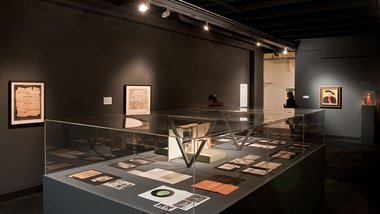
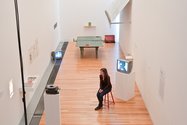


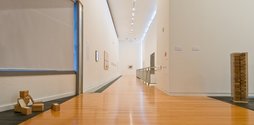


![Malcolm Ross, Untitled [Maltreated Furniture: Coat Hooks] 1971 (2012 reconstruction of 1971 original) Giovanni Intra, Golden Evenings 1994 (2012 partial reconstruction of installation originally conceived for Art Now, Museum of New Zealand.](/media/thumbs/uploads/2012_09/Ross_Intra_jpg_380x125_q85.jpg)
 Advertising in this column
Advertising in this column Two Rooms presents a program of residencies and projects
Two Rooms presents a program of residencies and projects
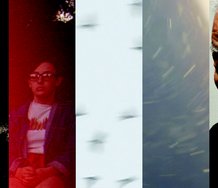
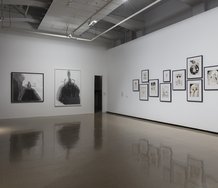
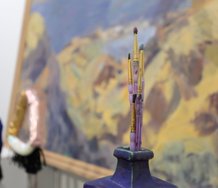
This Discussion has 5 comments.
Comment
John Hurrell, 9:23 a.m. 19 September, 2012 #
Actually I thought Duchamp was an unrepentant mandarin. I see no connection between his ethos and yours (Barry) or Tao's or Letting Space or even the winning 'bus stop' work in Hamilton. There is no evidence Duchamp had a social conscience at all.
John Hurrell, 10:54 a.m. 19 September, 2012 #
Sorry to be blunt but I think you're deluded, Barry. Beuys hated Duchamp ("The silence of Marcel Duchamp is overrated.") Tina or Marcus should have picked you up and thrown you down the stairs. Political art has no connection to Duchamp's thought. He was a high priest pretending to be an anti-aesthete.
John Hurrell, 3:52 p.m. 19 September, 2012 #
When Duchamp was silent we all know it was not really to play chess (that was a fib) but to secretly make Etant Donnes. That work is seen as the culmination of his life's project, and is it about ways of making the world a fairer and happier place? No way. It is very personal, about desire, language, the occult and cosmology - and not at all about improving the lot of our species. It is entirely self-absorbed.
John Hurrell, 8:21 p.m. 19 September, 2012 #
I meant self-absorbed in opposition to having community or politico-social preoccupations. Duchamp was obsessed with art as a game, as a social construct to be analysed - its rules and strategies poured over as an intellectual diversion. He spurned art as a public method of bringing about political change, favouring instead it as a language game to be used to entertain himself. Though it is public, he saw art in essence as a vehicle for private self amusement. That is why he was so fond of the masturbation trope, because he was indifferent to the wider world that you and others like Tao deeply care about.
Tao Wells, 8:05 p.m. 19 September, 2012 #
to me scanning the comments, both of you are straining under unfair weights. It is a disgrace in my view that our public academics' inadequacies, design the enormous weight of these arguments to fall frustratingly into the margins. I think it was fantastic what you did Barry demonstrating so clearly with a piece of string that a kind of spirit of Duchamp, perhaps as re-imagined by Beuys, is alive just not allowed. Perhaps it's just not that interesting. Or it is too interesting, just to the wrong people.
Participate
Register to Participate.
Sign in
Sign in to an existing account.